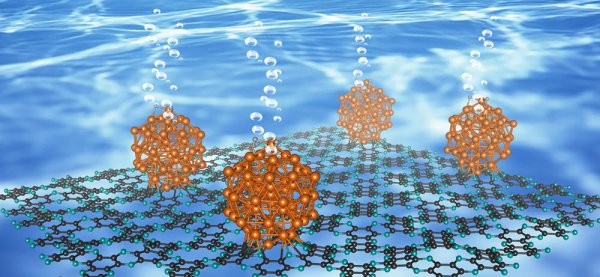 |
Scientists at Johns Hopkins University and the University of California, Los Angeles have discovered that copper particles can stabilize platinum-nickel catalysts used in hydrogen fuel cells to produce clean electricity.
Hydrogen fuel cells can power cars and trucks and provide an energy source that does not produce carbon emissions and pollutants. But so far, their potential has been limited because of the high cost and instability of platinum-nickel catalysts used to initiate chemical reactions that produce clean electricity.
Through experiments and computer simulations, materials scientists from Johns Hopkins University and the University of California, Los Angeles have taken a big step toward achieving this future. Their research was published in Matter magazine, which provided a new idea for a method of stabilizing the catalyst by adding copper, and explained in detail why this method is effective.
The team at UCLA is led by Huang Yu, a professor of materials science and engineering. The research team at Hopkins University is led by Tim Mueller, an assistant professor of materials science and engineering.
"The problem is that platinum nickel catalysts for fuel cells are very promising to degrade over time," Miller explained. His research focuses on developing and applying computational methods to enable researchers to understand the true behavior of materials and develop new materials for advanced technologies. "Professor Huang's team found that adding copper to the catalyst helped reduce the amount of nickel dissolved. Our team helped them figure out the reason, which is important for those who want to build on this research. "

In the experiment, researchers at the University of California, Los Angeles found that the introduction of copper atoms into platinum-nickel nanoparticles with special shapes improved their durability by 40% compared to copper-free nanoparticles. These new catalysts are very stable, which means that more transition metals are retained in the platinum-nickel-copper particles, although they may be filtered out under corrosive conditions. They are also more effective in catalyzing chemical reactions than platinum-nickel alloys and commercial platinum-carbon alloys.
To figure out why this happened, Miller ’s team at Hopkins designed a model based on experimental data and conducted a computer simulation to reveal the single atom in the type of environment encountered by the catalyst in the fuel cell. How it moves around the nanoparticles.
"We simulated these particles, including those with and without copper, to see how the addition of copper affects the degradation of the particles," Johns Hopkins (Johns Hopkins) postdoctoral scholar in materials science and engineering Co-lead author Cao Liang said. "We can track the evolution of particles on an atomic scale. Our simulations show that particles containing copper are more stable because they initially have more platinum on the surface, which prevents nickel and copper atoms from dissolving."
Professor Huang said that this new research is a milestone in understanding the relationship between the atomic structure and function of nanomaterials, and opened the door to new design strategies for high-performance nanocatalysts.
(Original source: Fuel Cell Engineering China New Energy Network Comprehensive)
Aluminium Strip,3003 Aluminum Strips,Aluminium Strip For Piping,Aluminum Strips With Narrow Width
Zhengzhou Yearshine Industry Co., Ltd , https://www.zzyscorp.com